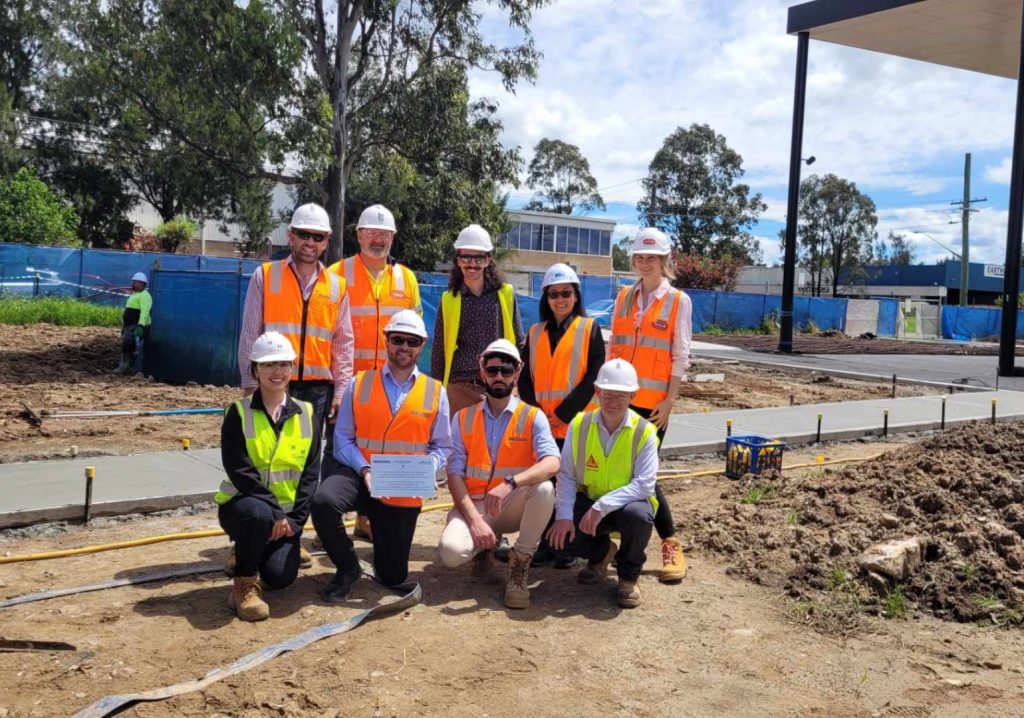Professor Vivian Tam has fought an uphill battle to have engineers and construction firms consider her CO2 Concrete innovation. Suddenly, there has been enormous interest.
The concrete challenge – using less of it, developing better types and recycling it – has always been as much about reputation as innovation. In a risk-averse construction environment, nobody has wanted to be the first to use a different product on a large scale.
So when Professor Vivian Tam, Director of the Centre for Infrastructure Engineering at Western Sydney University, developed a durable and high-strength recycled concrete product, the only test case she could develop was a drinking station for cattle at Hawkesbury Farm, within the university. At that time, in 2019, the CO2 Concrete was cast as slabs.
The first commercial pour of CO2 Concrete in October 2022 was also animal related. It was a 27-by-two-metre slab at Sydney’s Blacktown Animal Rehoming Centre.

In other territories such as Japan, Tam said, the government actively encourages industry to utilise more recycled materials on projects of certain sizes. But in Australia, with its varying rules across different states, innovation has been stunted by the lack of ability to develop a real-world use case.
But all of that is fast changing as clients of engineering and construction firms, and other stakeholders, demand higher levels of sustainability.
“There is a very high level of interest now,” Tam said. “I have some partners saying that even if CO2 Concrete was more expensive than virgin concrete, they would still use it because of the great benefits.
“We have been working with a lot of companies, including Holcim, Sika, AW Edwards, Mott McDonald and Bouygues, via the Holcim Accelerator Program Season 3.”
How does CO2 Concrete work?
The secret to the durability and strength of CO2 Concrete, Tam said, is in the injection of carbon dioxide into recycled aggregate within a pressurised chamber. This accelerates the carbonation process.
Uncarbonated recycled concrete with 100 per cent recycled aggregate replacement is around 30 per cent weaker than virgin concrete, meaning it is only suitable for certain use cases.
Carbonated recycled concrete, on the other hand, has a matching performance of virgin concrete, at a cost saving of more than 10 per cent.
Tam has spent many years perfecting CO2 Concrete, researching the ways the injection of carbon dioxide into recycled aggregate improves binding.
Now, she said, not only does the final product match the performance and beat the cost of virgin concrete, it also reduces carbon emissions and landfill waste, sequesters carbon permanently and is compatible with carbon capture technologies.
Success breeds success
As positive research results and demand for greater sustainability have resulted in dramatically increased industry interest, awards have also been flowing in.
CO2 Concrete won the Australian sector of the Global Holcim Accelerator Season 3 Program, which involved more than 400 start-ups around the world. Tam’s team also took home the gold medal at the Alliance of Guangzhou International Sister-City University’s Urban Innovation and Entrepreneurship Competition in 2021, and won the RISE (Research, Innovation, Sustainability, Enterprise) 2019 Award from the Leeds Sustainability Institute and the Technological University Dublin.
“The Holcim Accelerator Program is really helping us to bring our product to life because, as an academic, I don’t have that expertise,” Tam said.
“I don’t know how to commercialise or which parts of a building site the product can be used on, so the work with the program has been very valuable. We’re open to any opportunities, but their work with us has been very powerful.”
Such a product, Tam said, is increasingly vital, not only because of the increase in construction as the global population grows, but also because of the rapid pace of design change.
Structures were once expected to stand for more than 100 years, but today that’s closer to 50 years because of regular updates and design changes, she said.
At current levels of concrete production in Australia, CO2 Concrete could potentially offer a net lifecycle benefit of $16 billion and save 2.68 billion kg of carbon dioxide emissions, Tam and her team have calculated.
Having experienced such success with recycled concrete, and having finally talked industry into considering its use, Tam is now looking into how other products such as brick waste can also be recycled into concrete.
“Without the use of environmentally friendly construction material such as CO2 Concrete, our global climate change crisis can be increasingly worsened, which threatens habitat,” she said. “We would love to campaign for a legacy to the next generation by keeping this planet green as long as possible.”
